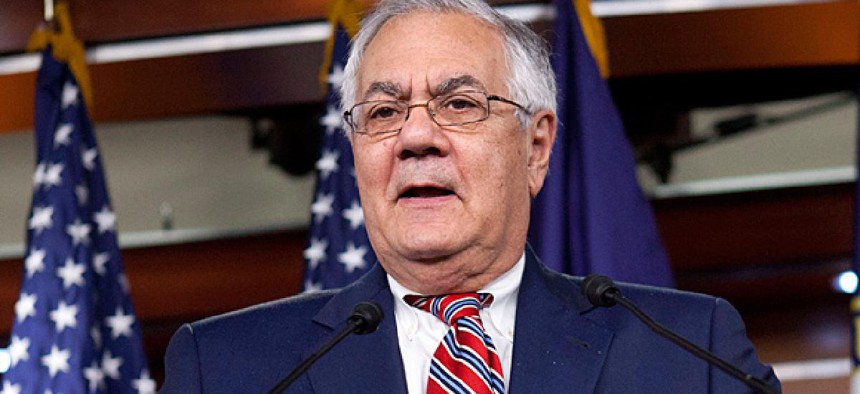Two studies outline 'responsible' defense cuts
Researchers differ on whether military pay should be touched.
Regardless of what happens in the current talks over avoiding the fiscal cliff, the defense budget ought to be in for a drawdown during the next decade, according to two new studies.
“The country is ready and there’s broad agreement that we’re overcommitted and should reduce the budget going forward within the current strategic framework,” retiring Rep. Barney Frank, D-Mass., told reporters Wednesday in a conference call praising the release of a study by the Cambridge, Mass.-based nonprofit Project on Defense Alternatives.
“The report is the antidote to the notion that America must maintain a presence anywhere in the world, and scale back overreach to make substantial contributions to reducing budget deficit, without having to savage social programs,” he said.
“There’s a bit of a cultural lag in the multidecade assertion that America needs to be everywhere, and on which Democrats were seen as weak,” said Frank, who thanked defeated Republican presidential candidate Mitt Romney for “reintroducing into the debate the idea that the American military should go anywhere anytime.” He said President Obama rightly ridiculed that idea, but the administration is “still not where it should be” on defense cutbacks.
The center’s study, titled “Reasonable Defense,” argues that the chief threat to U.S. national security is economic. “The strategic formula for success in achieving security and sustaining strength is to focus America’s armed forces on cost-effectively deterring and containing current threats while we work principally by other means to reduce future conflict potentials and strengthen the foundation for cooperative action,” the study said.
Chief author Carl Conetta said the plan described in “Reasonable Defense” would reduce U.S. presence in the world by 40 percent and save more than $550 billion over 10 years. It would trim active-duty military personnel from 1.4 million to 1.15 million, a 19 percent cut; it would reduce procurement by 16.8 percent from the level in Obama’s fiscal 2013 budget and scale back the number of contractors by 25 percent.
Military pay and benefits, however, should stay as they are, he added, “because they’re needed to maintain morale after the troops have been pushed for 10 years and because they affect the economy.”
Citing President Eisenhower’s famous warning against permanent wartime defense buildups, Conetta said, “we should spend what we need to but not more.”
Separately on Thursday, the Stimson Center released a study titled “A New U.S, Defense Strategy for a New Era” that identifies cuts “close to $1 trillion, or almost 20 percent of the 10-year defense budget plan.”
They would be achieved through $500 billion from more efficient uses of personnel, $300 billion by reforming compensation and at least $100 billion from improved acquisition processes, said the report, the product of a yearlong effort by 15 independent experts. They include retired Marine Gen. James Cartwright and former State Department officials Leslie Gelb and Anne-Marie Slaughter.
Barry Blechman, chairman of the committee and co-founder of Stimson, said, "the vast experience and perspectives this committee brought to the table helped shape a promising new defense strategy, which we call ’strategic agility.’ It does not dictate a particular force structure but demonstrates how the United States can achieve a better defense strategy to meet our security needs, while acknowledging the fiscal crisis facing the country."
The committee says U.S. national security planners should:
- Maintain space, air and naval forces superior to those of any potential adversary;
- Uphold robust and technologically advanced special operations forces to counter terrorists and criminal enterprises, protect US citizens overseas, and for other contingencies;
- Resist being drawn into protracted land wars;
- Prioritize funding in research and development budgets, especially basic research in science and technology;
- Revise their Cold War nuclear planning assumptions, which would allow reductions in the size of nuclear forces, preferably through a new treaty with Russia;
- Implement long-standing proposals to use personnel more efficiently; to reform compensation systems; and to streamline the system used to acquire equipment, goods and services.
The study was funded by the nonpartisan Peter G. Peterson Foundation.




